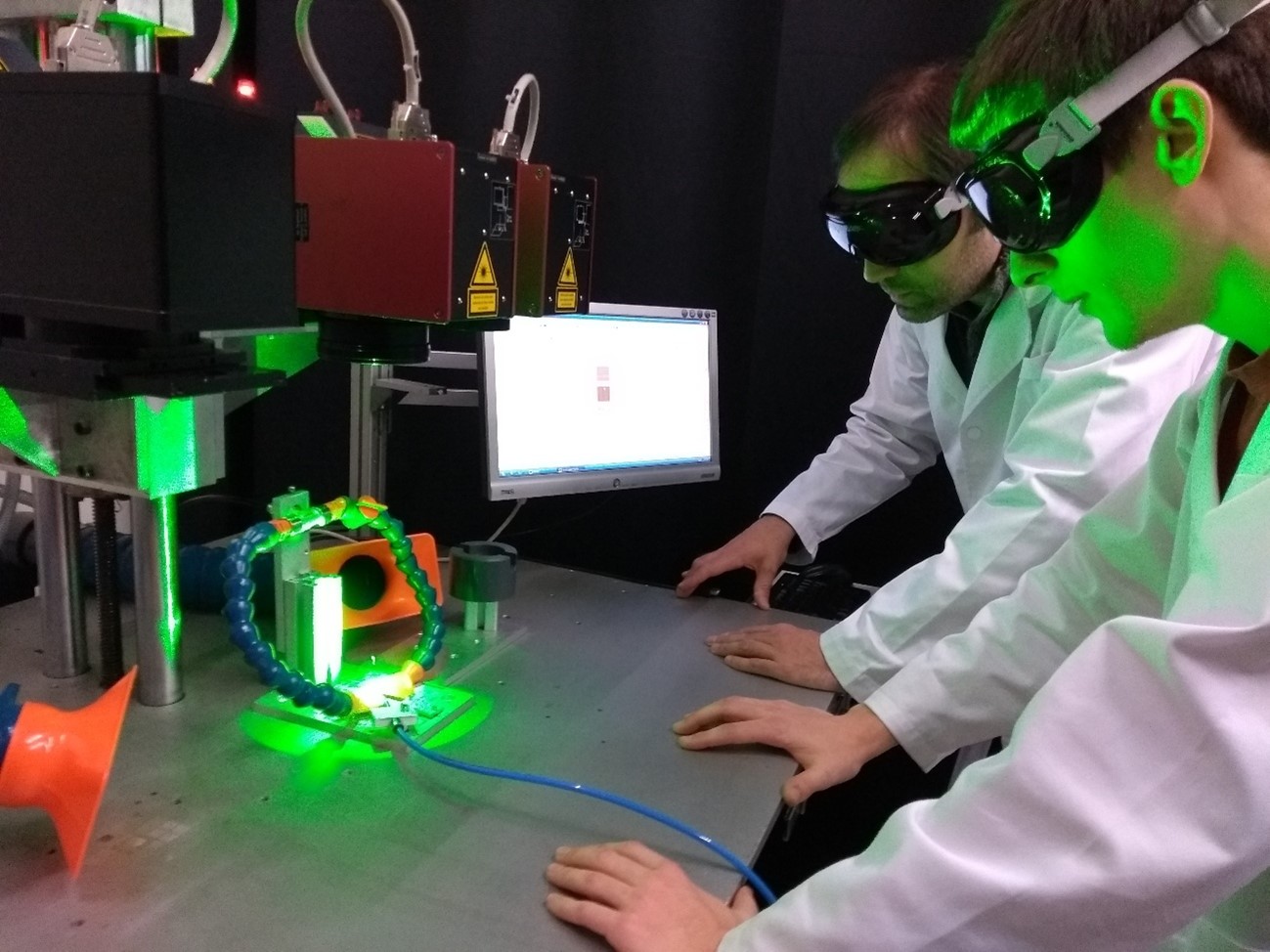Ensuring universal and equitable access to water is one of the main challenges facing humanity, especially when 4 billion people currently suffer from scarcity, a trend that is also growing. A solution to tackle drought could be in the air we breathe, according to researchers from the LaserON group, which is part of the Cintecx center at the University of Vigo. The experts, in collaboration with French scientists, have designed an innovative system that allows the collection of dew water, whose details are outlined in an article recently published in the international journal Advanced Materials. Their proposal is based on laser microtexturing that allows the collection of dew water in the same way that plants do during the night.
The publication, which occupies the cover of the latest issue of the journal, is signed by three researchers from Cintecx (Professor Juan Pou, director of the LaserOn group; Professor Antonio Riveiro and researcher Pablo Pou-Álvarez) along with some of the leading experts in dew water condensation, such as Daniel Beysens (Physique et Mécanique des Milieux Hétérogènes, CNRS, ESPCI, France); Tarik Bourouina (Esycom Lab, CNRS, France); and Anne Mongruel (Sorbonne Université, France).
A passive, robust, simple, and durable system
UVigo researchers explain that atmospheric water vapor, “ignored until relatively recently, can be considered a viable complementary resource of fresh water, as the atmosphere not only contains a huge amount of this vapor (greater than available in all the rivers on Earth), but it is also everywhere and can be obtained without geographical or hydrological restrictions, from the driest deserts to the most humid cities.” However, the use of this resource has been very complicated, as engineers explain, the methods used so far to collect it “require considerable energy resources or depend on refrigerants, which further contribute to global warming and ozone layer depletion.”
In contrast, the method presented by Cintecx engineers is “passive, as it does not require electrical energy, is robust, simple, and durable” and is based on the way plants collect dew water at night.
Patent application registration
The new system, for which they have already registered a European patent application, consists of a metallic surface that has been provided with a microtextured surface through a specific laser treatment. “This microtextured surface,” they explain, “manages to self-cool when exposed to the night sky thanks to its enhanced infrared emissivity, which causes water condensation similar to natural dew on plant leaves.” Laser microtexturing promotes condensation in the form of a continuous sheet on the surface instead of scattered droplets, unlike what happens on leaves, and this allows “efficient and autonomous water collection.”
The system was tested for more than a year continuously on the rooftop of the Institute de Physique du Globe, in Paris, “thus demonstrating its robustness and good performance.”

